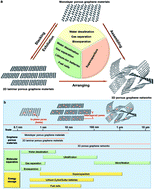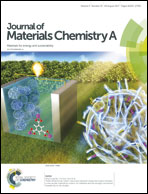Tailoring pores in graphene-based materials: from generation to applications
Abstract
Combining the merits from both porous material and graphene, porous graphene-based materials have received significant attention due to their unique porous structures, large surface areas and prominent electrical conductivity. The access and tuning of both the in-plane pores of a monolayer graphene and the interlayer spacing (interlayered pores) of multilayered graphene-based materials offer additional selective mechanisms. These extraordinary properties enable porous graphene-based materials to serve as critical components in molecular separation, including water desalination, gas separation and bioseparation, and electrochemical energy storage, such as supercapacitors, lithium–O2/ion/sulfur batteries and fuel cells. The state-of-the-art pore-fabrication methods as well as the interlayered pores tuning approach for graphene-based materials are summarized. The insights between structures, properties and the broad applications of these materials are reviewed and discussed. The remaining challenges and future perspectives of porous graphene-based materials for wide implementations are provided.

- This article is part of the themed collection: Recent Review Articles


 Please wait while we load your content...
Please wait while we load your content...